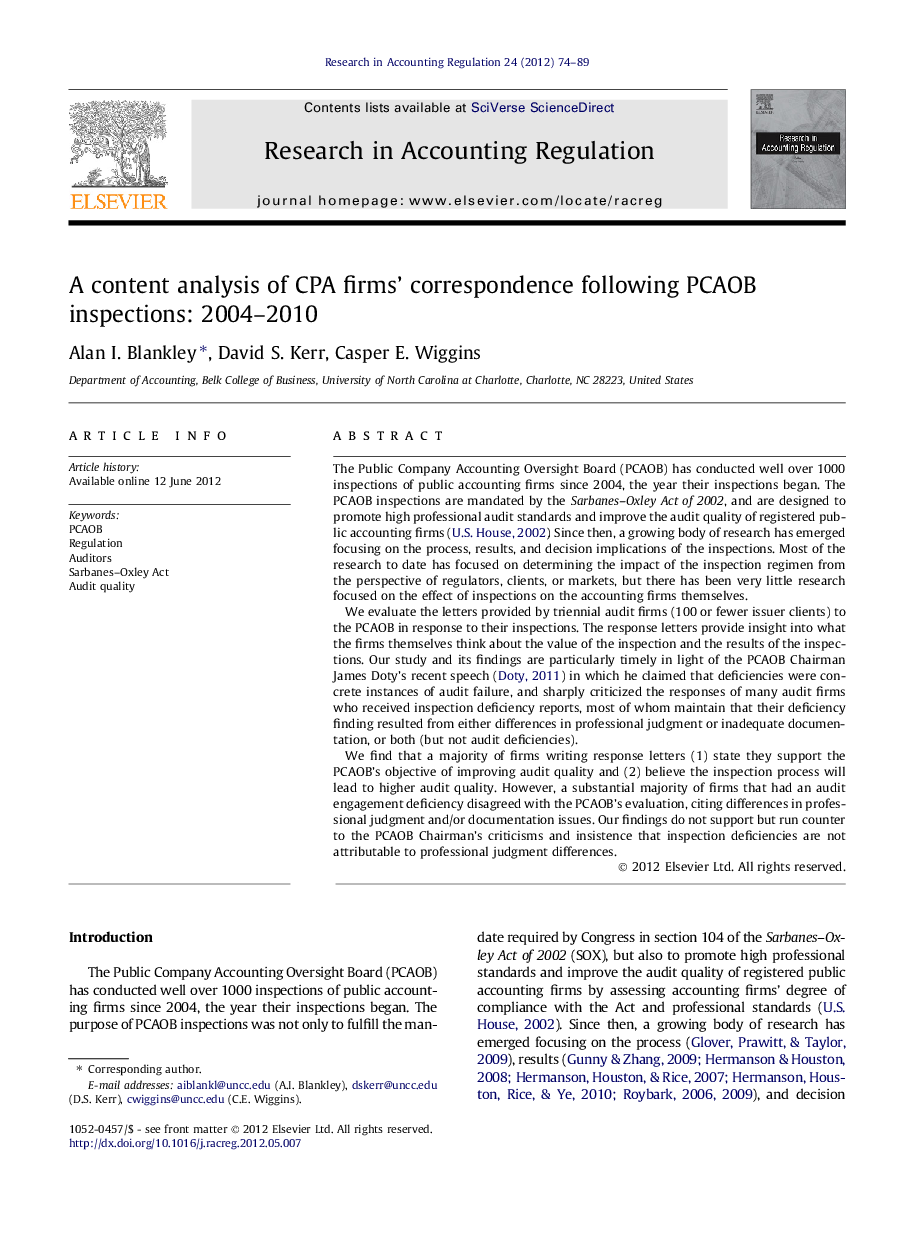| کد مقاله | کد نشریه | سال انتشار | مقاله انگلیسی | نسخه تمام متن |
|---|---|---|---|---|
| 1006719 | 938333 | 2012 | 16 صفحه PDF | دانلود رایگان |
The Public Company Accounting Oversight Board (PCAOB) has conducted well over 1000 inspections of public accounting firms since 2004, the year their inspections began. The PCAOB inspections are mandated by the Sarbanes–Oxley Act of 2002, and are designed to promote high professional audit standards and improve the audit quality of registered public accounting firms ( U.S. House, 2002). Since then, a growing body of research has emerged focusing on the process, results, and decision implications of the inspections. Most of the research to date has focused on determining the impact of the inspection regimen from the perspective of regulators, clients, or markets, but there has been very little research focused on the effect of inspections on the accounting firms themselves.We evaluate the letters provided by triennial audit firms (100 or fewer issuer clients) to the PCAOB in response to their inspections. The response letters provide insight into what the firms themselves think about the value of the inspection and the results of the inspections. Our study and its findings are particularly timely in light of the PCAOB Chairman James Doty’s recent speech (Doty, 2011) in which he claimed that deficiencies were concrete instances of audit failure, and sharply criticized the responses of many audit firms who received inspection deficiency reports, most of whom maintain that their deficiency finding resulted from either differences in professional judgment or inadequate documentation, or both (but not audit deficiencies).We find that a majority of firms writing response letters (1) state they support the PCAOB’s objective of improving audit quality and (2) believe the inspection process will lead to higher audit quality. However, a substantial majority of firms that had an audit engagement deficiency disagreed with the PCAOB’s evaluation, citing differences in professional judgment and/or documentation issues. Our findings do not support but run counter to the PCAOB Chairman’s criticisms and insistence that inspection deficiencies are not attributable to professional judgment differences.
Journal: Research in Accounting Regulation - Volume 24, Issue 2, October 2012, Pages 74–89
